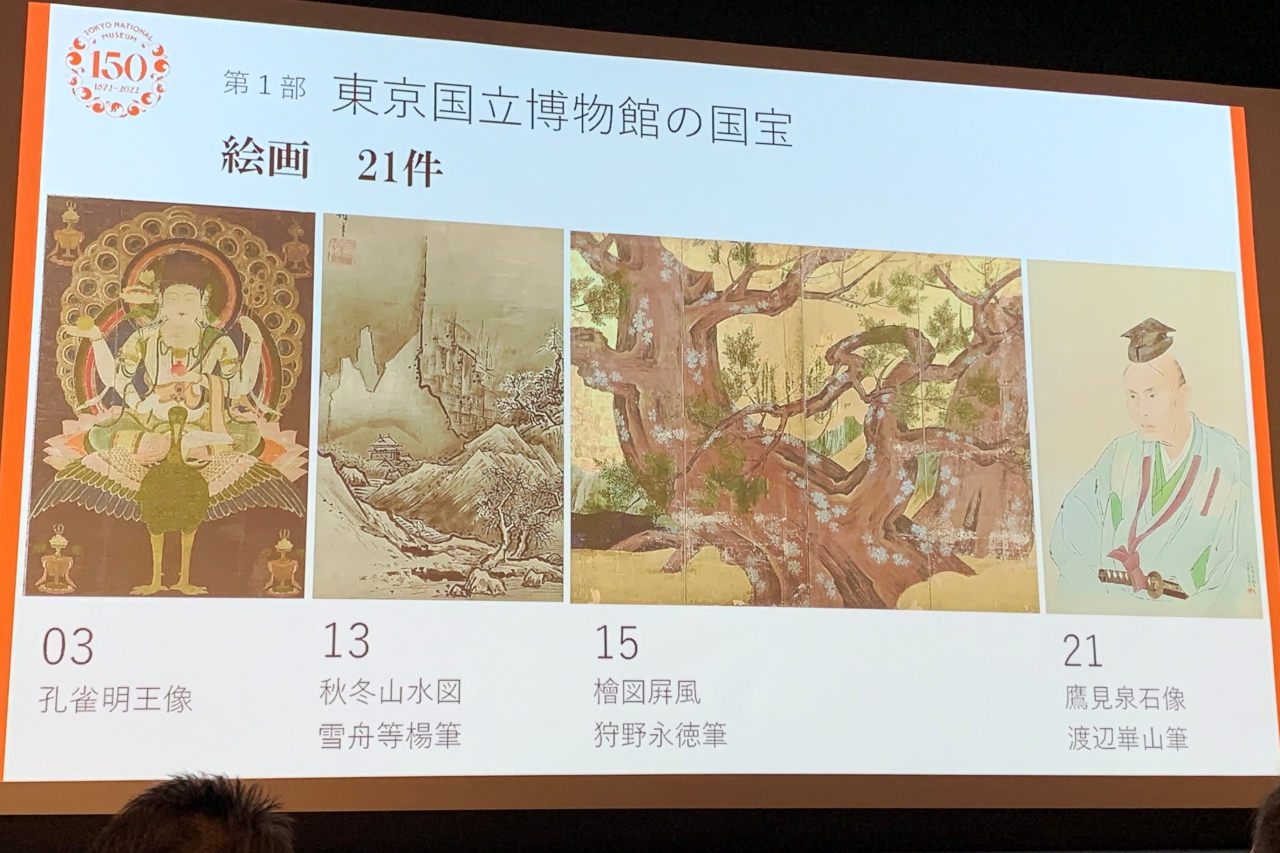Tokyo National Museum
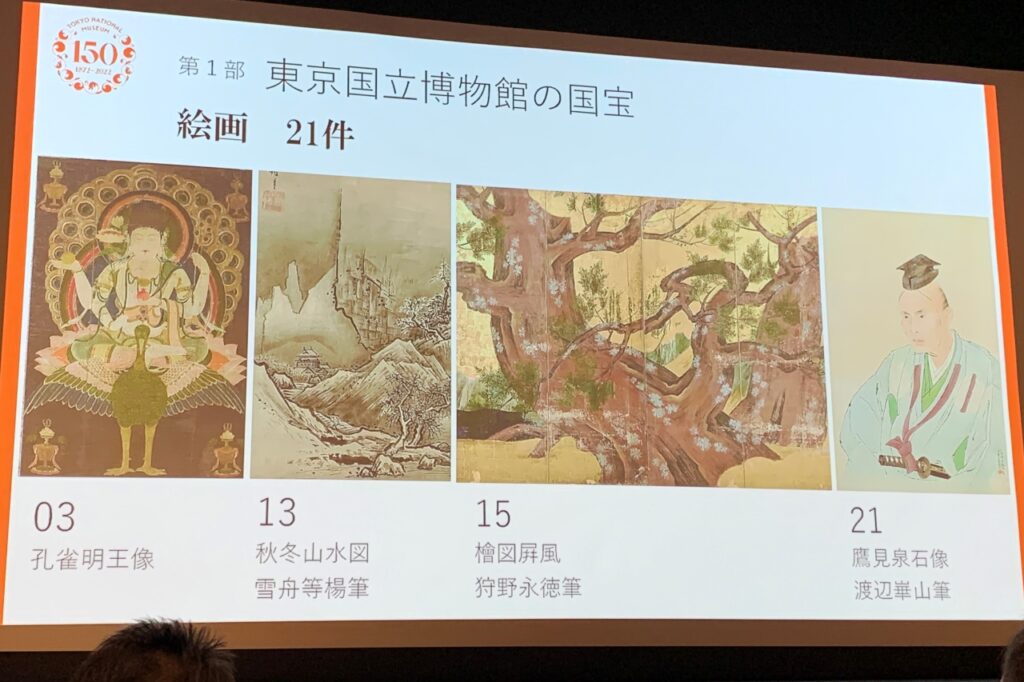
To commemorate the 150th anniversary of the Tokyo National Museum (Higashi Expo) in Ueno, Tokyo, all 89 national treasures held by the museum will be released from October 18 to December 11, 2022. A special exhibition “All about the Tokyo National Museum, a national treasure” will be held to commemorate the 150th anniversary of the opening of the Tokyo National Museum.
A press release was held on May 20th, and Mr. Hirosuke Sato, General Manager of the Registration Office of the Tokyo National Museum’s Column Management Division, explained the highlights of the special exhibition, so I would like to introduce it in detail!
◆ Highlights of the special exhibition “All about the National Treasure Tokyo National Museum”
1. First in history! All 89 national treasures in the collection have been released!
2. 19 national treasure swords are gathered! “National Treasure Sword Room” appears!
3. Relive the 150-year history of Tokyo National Museum from the Meiji era to Reiwa!
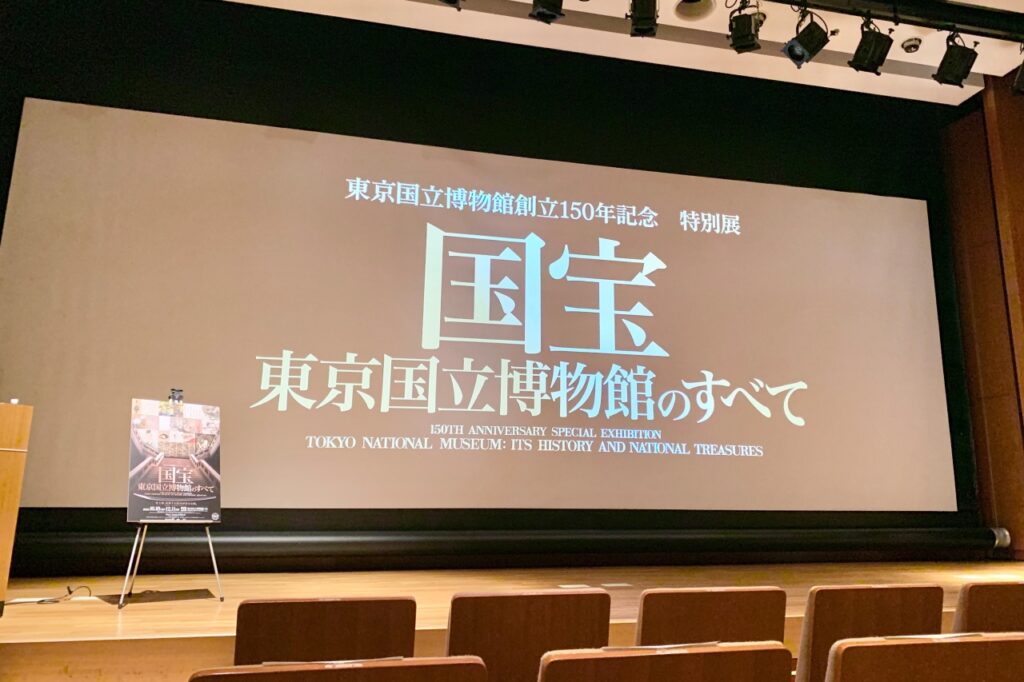
First in history! All 89 national treasures in the collection are open to the public!
Since its inception in 1872, the Tokyo National Museum has played a role in conveying Japanese culture to the future and the world as a museum with the longest history in Japan. The special exhibition “All about the Tokyo National Museum, a national treasure,” is a masterpiece that includes all 89 national treasures from the huge collection of about 120,000, and 150 from the Meiji era to Reiwa, in order to introduce the whole picture of the Tokyo National Museum. This is an exhibition of related materials that tell the story of the year.
This exhibition consists of two parts , “Part 1 National Treasure of the Tokyo National Museum” and “Part 2 150 Years of the Tokyo National Museum” .
As the name suggests, “Part 1 Tokyo National Museum’s National Treasure” is the first time in history that Tohoku, which boasts Japan’s largest national treasure collection, will unveil 89 national treasures in one exhibition (*) . It’s the perfect spirit for a memorial year!
(*) Some works will be changed during the exhibition period. Please note that you cannot see all the items just by visiting once.
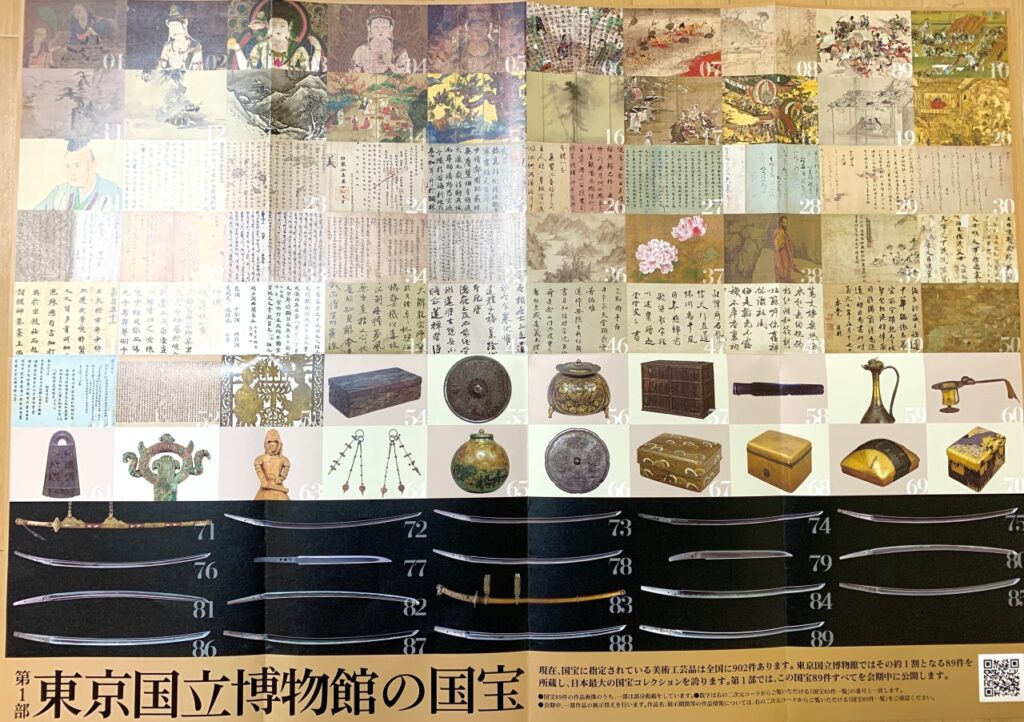
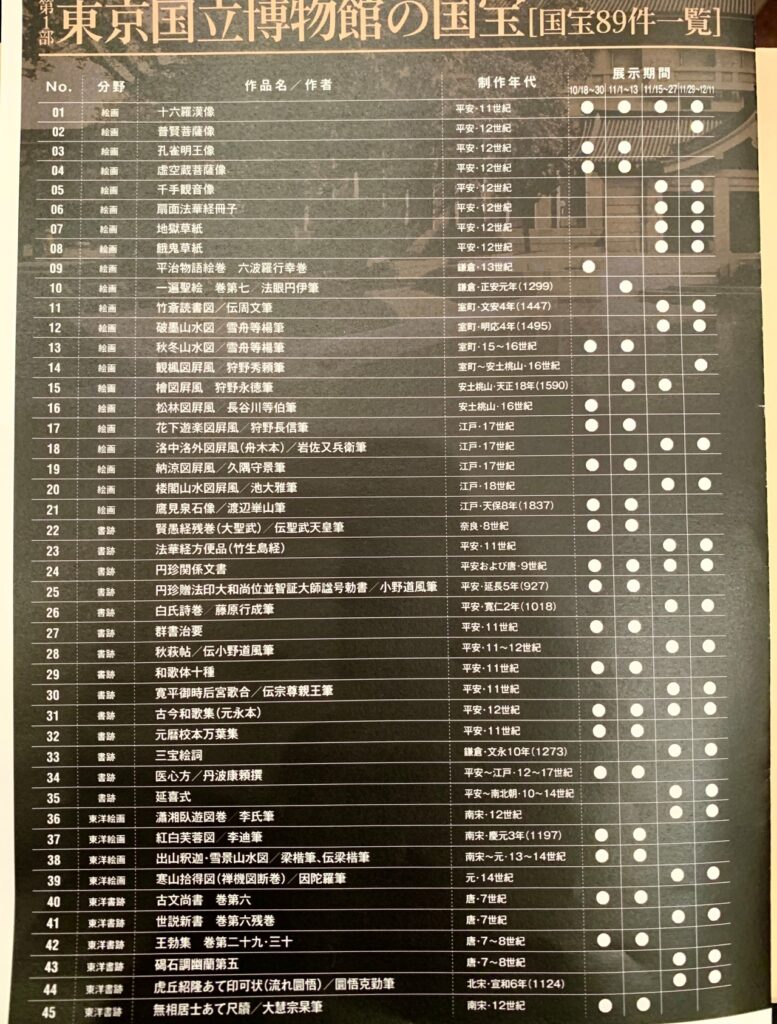

You can also check the list of national treasures on the official website ⇒ https://tohaku150th.jp/
By the way, 89 cases are about 10% of the 902 arts and crafts currently designated as national treasures. It’s so amazing that you can meet one tenth of a national treasure just by visiting this exhibition …!
It seems that Mr. Sato and other researchers at Tokyo National Museum have never seen a scene in which all 89 national treasures were lined up. I will talk about the reason as follows.
“Usually, we limit the exhibition period in order to balance the preservation and disclosure of cultural properties, and we systematically publish several items in each field in a cycle of one to several years. In order to publish them all together, it was necessary to adjust the exhibition plan in anticipation of a few years ago to a few years later. This was the most difficult thing, but with the understanding and cooperation of researchers in each field. It is now possible.
A truly miraculous thing that was possible because it was founded 150 years ago. Maybe it will be 200 or 50 years after the company was founded. ”
Hmmmm … In other words, this exhibition is a big event that moves the history of Tokyo National Museum. As Mr. Sato says, it may be a once-in-a-lifetime opportunity. Expectations will rise from now on!

The breakdown of 89 national treasures is 21 paintings, 14 handwritings, 4 oriental paintings, 10 oriental writings, 11 treasures dedicated to Horyuji Temple, 6 archaeological works, 4 lacquering works, and 19 swords .
Mr. Sato stated his enthusiasm for the event, “We want to pursue the optimum exhibition design and lighting for each work, and provide an ideal exhibition space and the best environmental experience .”
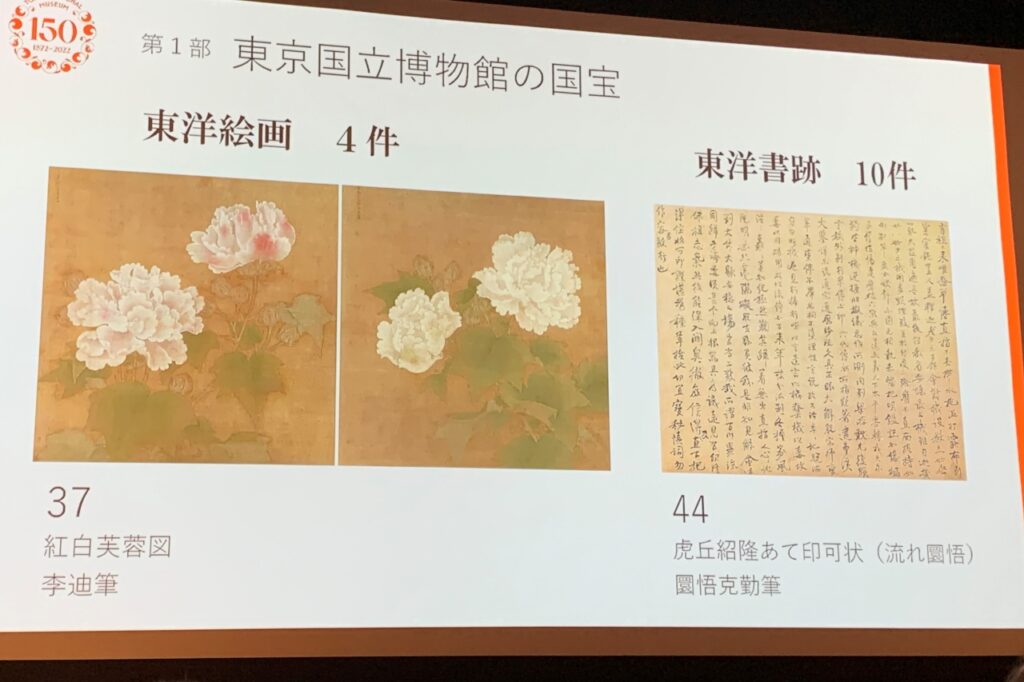
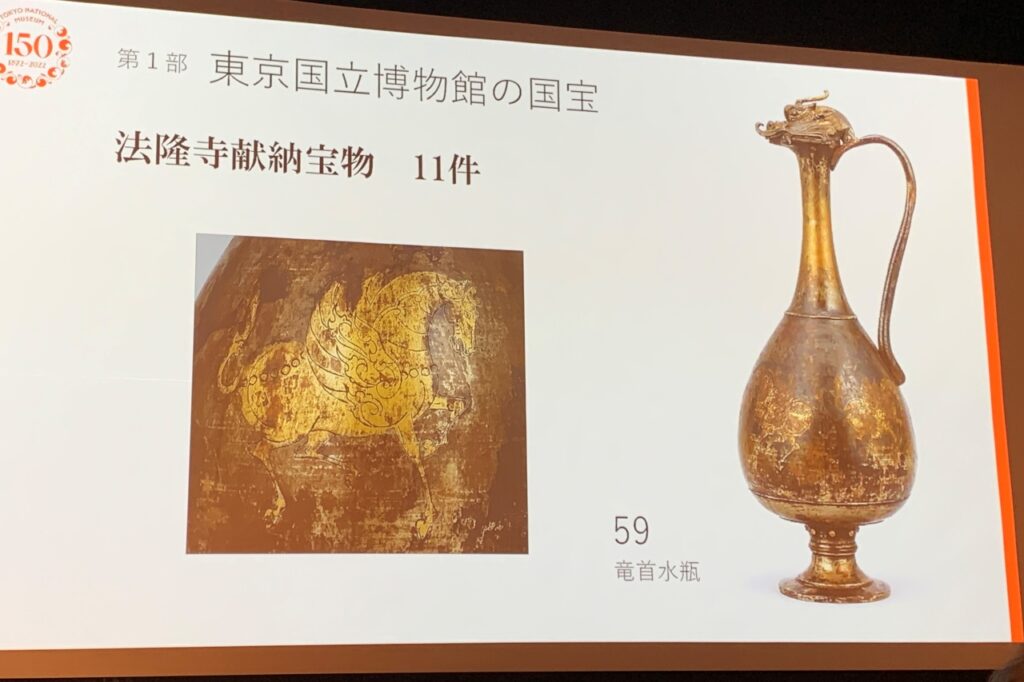

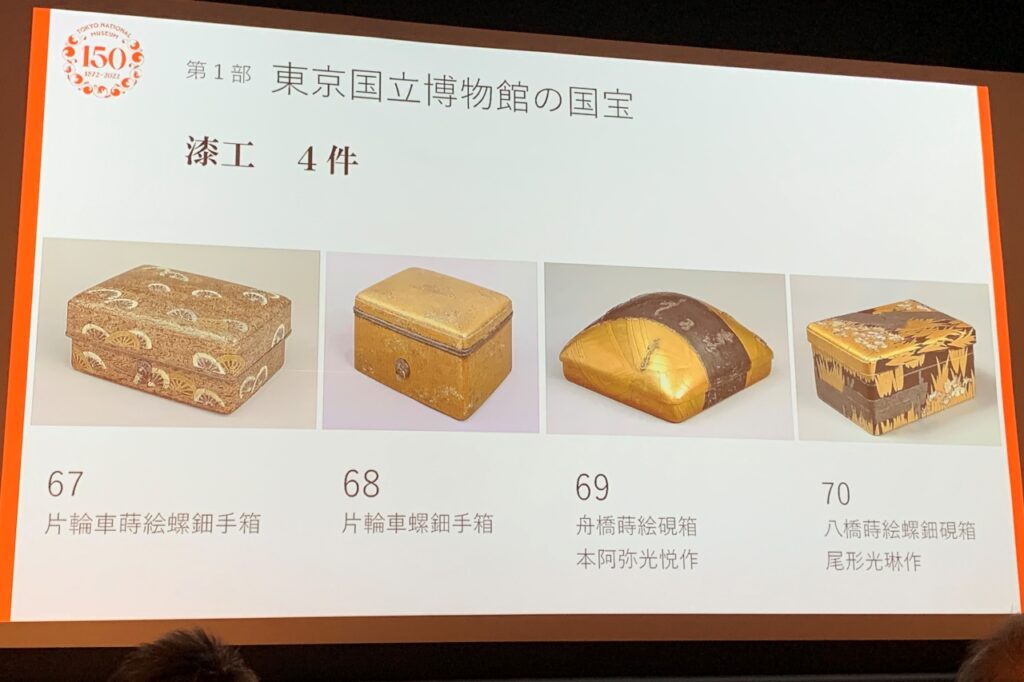
Among the introductions of national treasures in each field, the one that caught the eye was the field of painting, which has the largest number of 21 cases.

From Heian Buddhist paintings such as “Mahamayuri Statue” to Muromachi ink paintings such as Sesshu and Yang “Autumn and Winter Landscapes”, Momoyama paintings such as Eitoku Kano “Cypress Trees”, Watanabe Kazan “Takami Izumiishi Statue” Even Edo portraits like … It’s a gorgeous lineup just like a Japanese art textbook that everyone will be familiar with.
Among them, Mr. Sato wants you to pay attention to “Heiji Monogatari Emaki Rokuhara Yukiyuki Maki”.

“This is the oldest surviving battle picture scroll drawn in the Kamakura period, and the highlight is the realistic depiction of the armor and swords worn by the samurai. This exhibition has a limited exhibition period of two weeks, but that’s it. We will expand all the scenes with a total length of 9m50cm. “
It seems that works that can only be seen in part due to space constraints in the usual exhibition will be exhibited with a large service because it is a memorial year.
19 national treasure swords are gathered! “National Treasure Sword Room” appears!
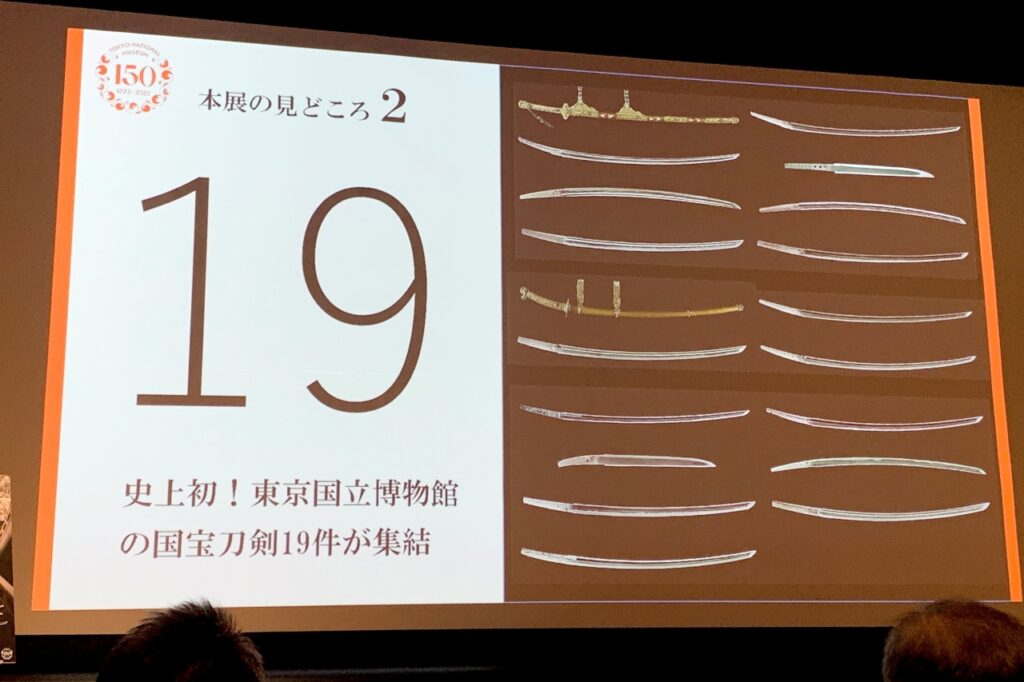
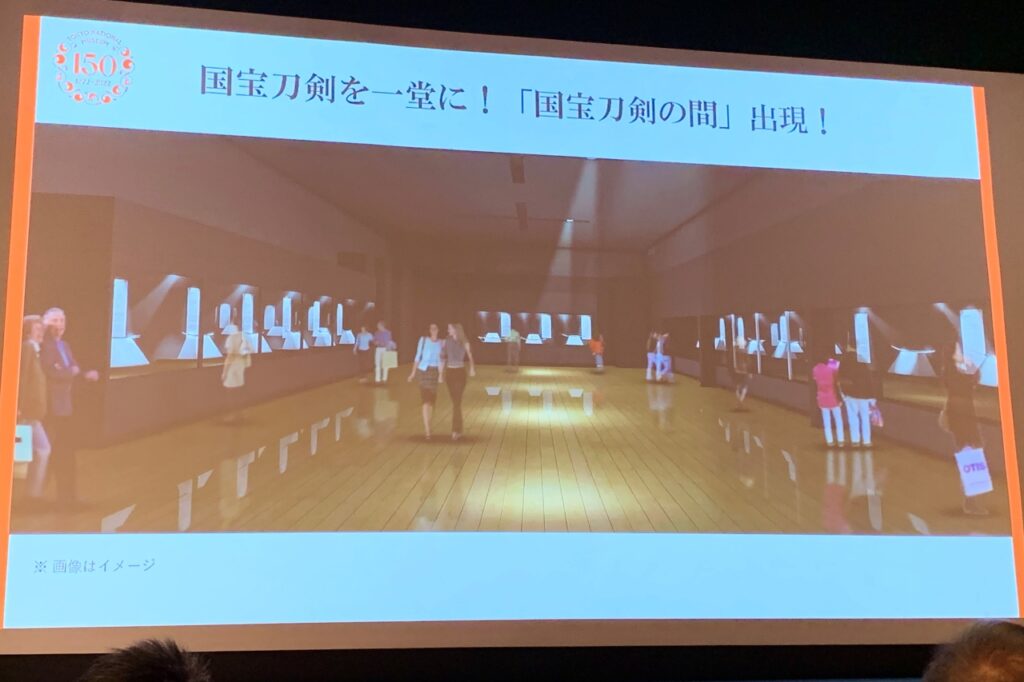
The number of national treasure swords in the Tokyo National Museum is 19, which is the second largest after paintings, and it is said that the number of swords in one museum is the largest in Japan. This time, 19 of them will be collected in an exhibition room named “National Treasure Sword Room” and will be exhibited throughout the entire period (happy!).
“By the way, out of the 19 national treasure swords, we have a lineup of 6 national treasure swords that have become male characters in a certain game with the theme of swords, and we are waiting for fans,” says Mr. Sato.
Of course, a certain game is the popular game “Touken Ranbu”. Mikazuki Munechika, Ohokanehira, Atsuto Shiro, Kameko Sadamune, Dai Hannya Nagamitsu, Koryu Kagemitsu … It seems to be a coveted space for fans.
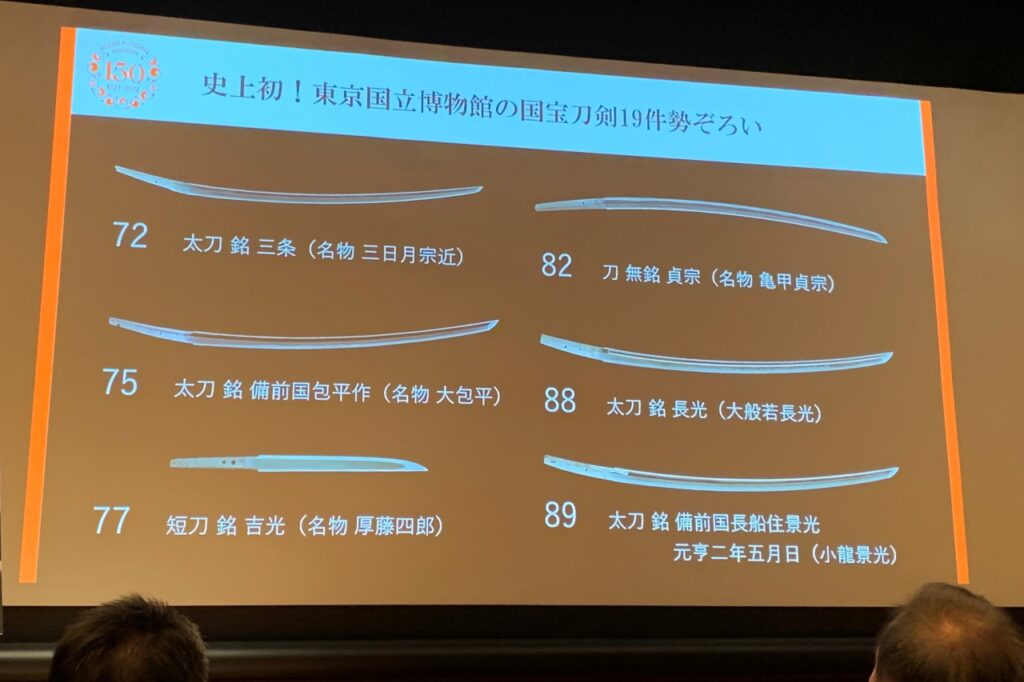
Mr. Sato specializes in researching weapons and armor, mainly swords and armor, and he talked about the appeal of swords with particular enthusiasm.
“” Tachi Mei Sanjo (famous Mikazuki Munechika) “and” Tachi Mei Yasutsuna (famous Dojigiri Yasutsuna) “, these two are famous as famous swords in the early days of the establishment of Japanese swords, but in fact the dimensions of the blade of the blade Is exactly the same. “
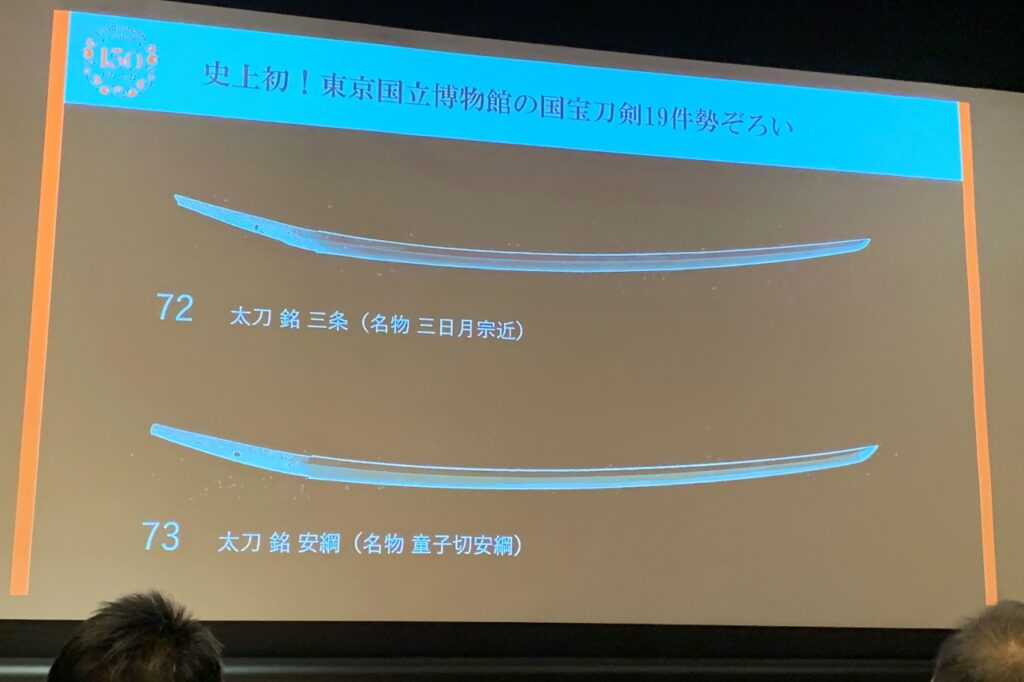
“The blade is 80 cm long and has a warp of 2.7 cm. However, did you notice that the silhouette of the blade is quite different?
Mikazuki Munechika has a slender blade, and the part at hand is strongly along and tapered. It gives an overall graceful impression. On the other hand, the Dojigiri Yasutsuna has a curved blade as a whole, and has a solid strength. I think this is a reflection of the local culture of the author’s residence, Yasutsuna, based in Hoki no Kuni (now Tottori Prefecture), as opposed to Munechika, who is based in the capital of Kyoto. increase”
It is said that differences that cannot be easily conveyed by photographs and words can be understood sensuously by comparing the real thing with the “National Treasure Sword Room”.
“In these 19 exhibitions, we are particular about the shape and lighting of the case so that you can see the highlights of the sword, such as the blade pattern and the bullion, more beautifully. You can appreciate it and think about the story of each sword. I hope you can fully immerse yourself in the charm of Japanese swords among these national treasure swords. “
Relive the 150-year history of Tokyo National Museum from the Meiji era to Reiwa!
In “Part 2 150 Years of the Tokyo National Museum” , the 150 years of Tohaku, which can be said to be the history of Japanese museums, is divided into three eras, and the collections and related materials of each era are introduced. The exhibition will be structured so that you can “relive” the steps from the Meiji era to Reiwa.
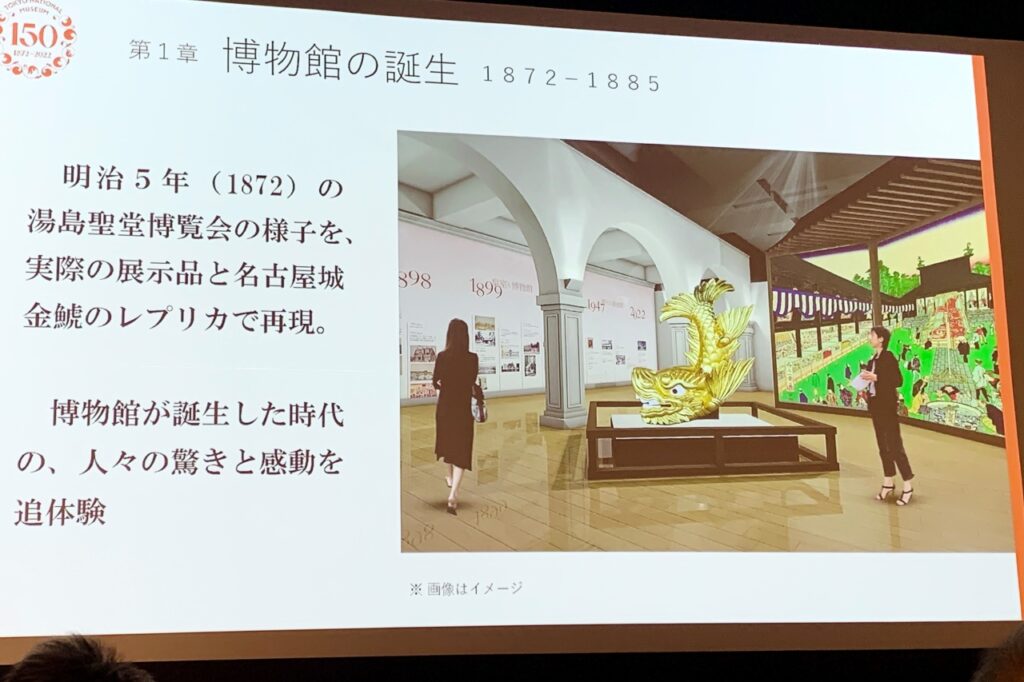
Tokyo National Museum has its roots in the “Museum of the Ministry of Education”, which was born in the wake of the exposition held at the former Yushima Seido Taiseiden in 1872, and is based in Ueno 10 years later in 1882. There is a history of moving to full-scale activities.
“Chapter 1 The Birth of the Museum” introduces some of the actual works exhibited at the Yushima Seido Exposition, which is the beginning of the Tokyo National Museum, along with the collection of the early Tokyo National Museum. A full-scale replica of the golden shachihoko of Nagoya Castle, which was the most popular at the exposition, will also be exhibited to recreate the atmosphere of the time.

In 1886, the museum came under the jurisdiction of the former Imperial Household Ministry, and three years later it was renamed the “Imperial Museum” and 11 years later it was renamed the “Tokyo Imperial Household Museum”.
Originally, the museum aimed to be a comprehensive museum with functions such as a botanical garden, a zoo, and a library, but it was gradually positioned as a national cultural symbol and a tradition of imperial beauty, and became a museum of history and art. It seems that it has strengthened.
In “Chapter 2 Imperial Household and Museum”, we will introduce works that tell the story of the connection with the imperial family and the Tokyo National Museum collection during the “Imperial Household” and “Imperial Household” era. Especially unique is the stuffed giraffe specimen that was exhibited as a natural history document during the “Imperial Household Museum” era.

This giraffe was the first giraffe to come to Japan alive in 1907, and was a popular person at Ueno Zoo. After the Great Kanto Earthquake of 1923, it became a collection of the National Museum of Nature and Science next door. This exhibition is the first time in about 100 years to return to the museum.
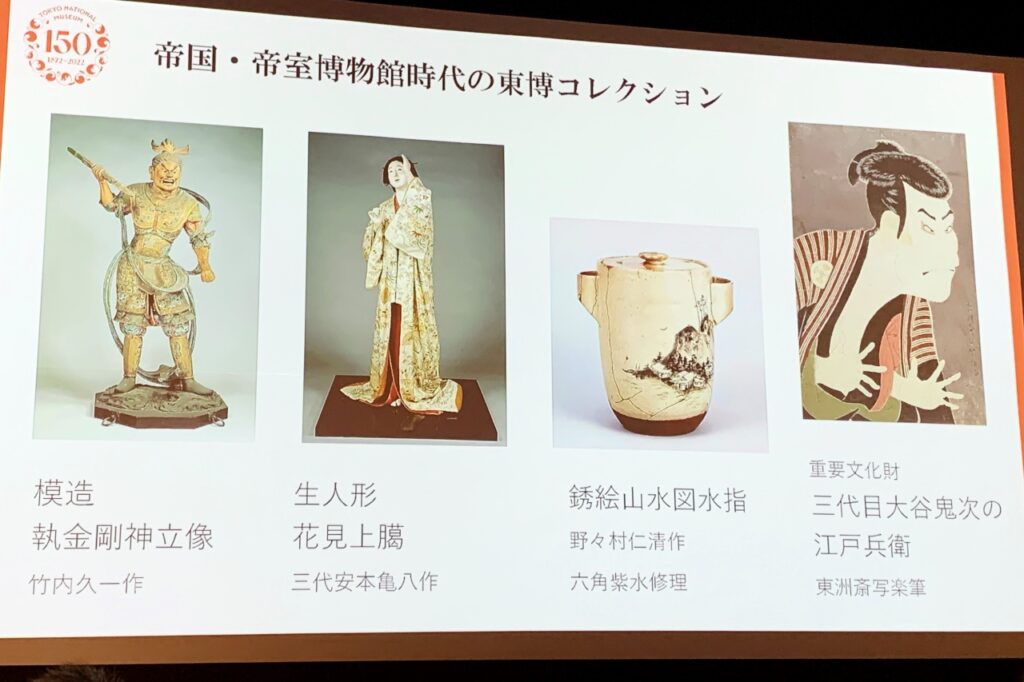
It seems that there are many points to be noted other than the work, as it reproduces the retro exhibition space at that time by utilizing the exhibition case of about 100 years ago.
In “Chapter 3 Toward a New Museum,” Tokyo National Museum has taken a new step as an open museum for the people after the end of the war, and has been working on various museums in response to changes in the times and the demands of society. Introducing activities with representative postwar collections.
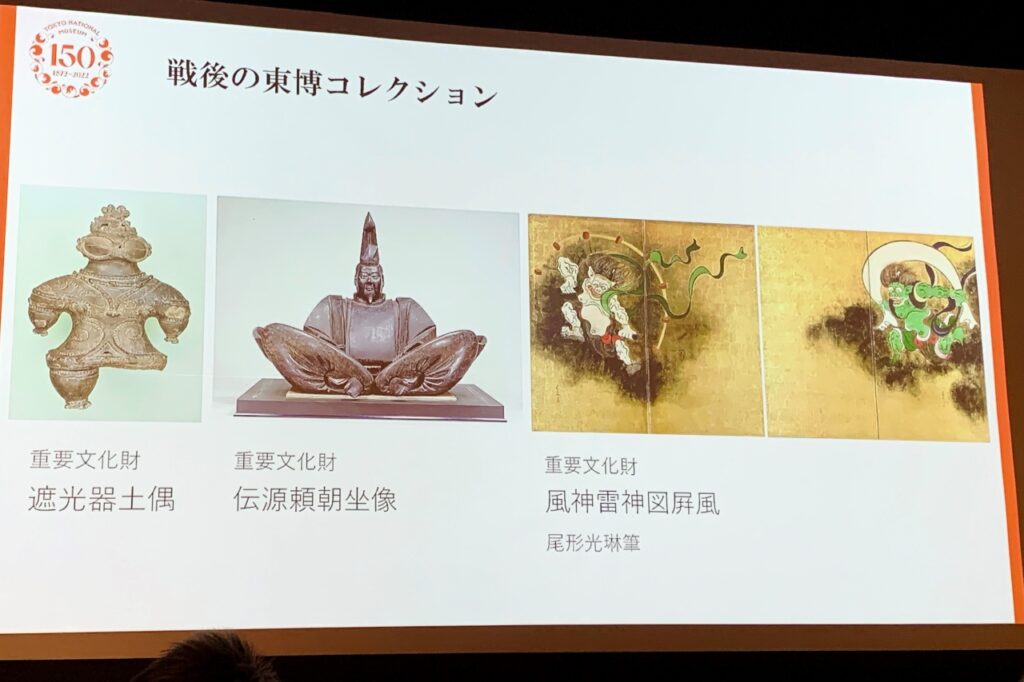
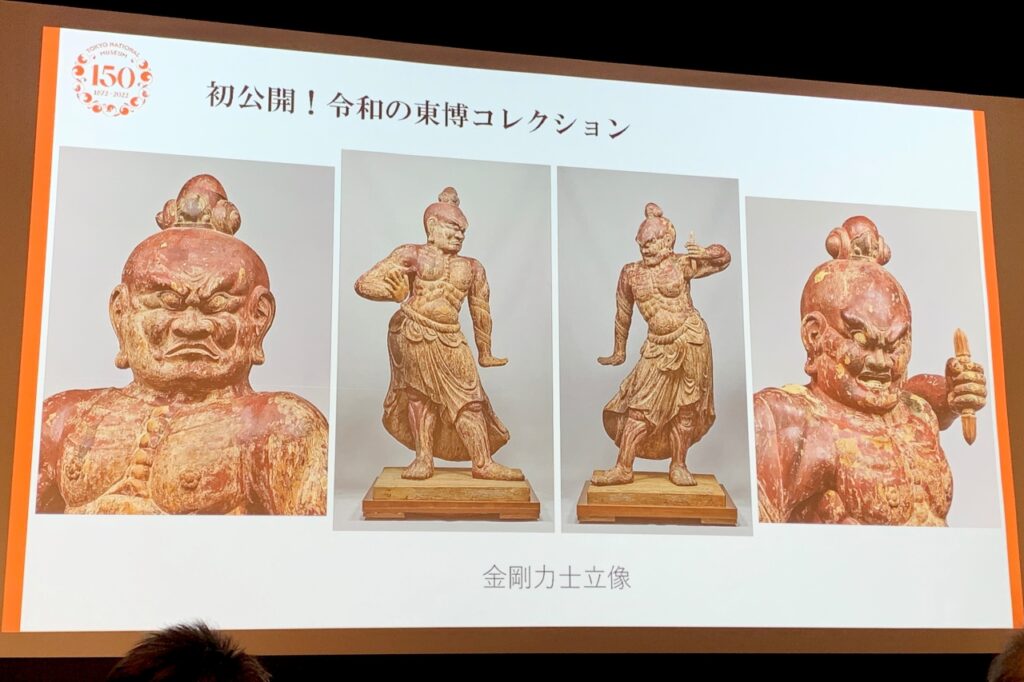
At the end of the exhibition, the “Kongo Rikishi Statue”, which was newly owned by the Tokyo National Museum last year, will be unveiled for the first time as the “Reiwa Tohaku Collection”. It is one of the few statues of Kongorikishi in the 12th century at the end of the Heian period, which was once enshrined in a temple in Shiga prefecture. Both of them are close to 2m80cm in height, and are said to be the largest Buddhist statues in the collection of Tokyo National Museum. The highlight is the strong body and the expression of anger.
Finally, Mr. Sato sent the following message.
“In this way, this exhibition introduces all of Tokyo National Museum through 89 national treasures and 150 years of history, and is suitable for a memorial year realized because it is the 150th anniversary of its founding. See the national treasures and history of Tokyo National Museum together. It is perfect for those who are new to Tokyo National Museum to make their debut, and I think there will be new discoveries and rediscoveries for repeaters who have visited many times.
The concrete preparations for the exhibition are about to begin. We will endeavor to make the exhibition more fulfilling and to make the exhibition full of festivals like an exhibition poster. Please look forward to it! “

From October 18, 2022, the special exhibition “All about the Tokyo National Museum,” which welcomes visitors with a total of 150 items, including not only 89 national treasures but also 24 important cultural properties, and a lot of content related to the 150th anniversary. Scheduled to open. Let’s look forward to it!
Outline of the special exhibition “All about the Tokyo National Museum, a national treasure” commemorating the 150th anniversary of the founding of the Tokyo National Museum
| Legislative session | October 18th (Tuesday) -December 11th (Sunday), 2022 |
| venue | Tokyo National Museum Heiseikan 2nd floor special exhibition room |
| Organizer | Tokyo National Museum, Mainichi Newspapers, NHK, NHK Promotion, Japan Arts Council, Agency for Cultural Affairs |
| inquiry | 050-5541-8600 (Hello dial) |
| Official site | https://tohaku150th.jp/ |
| Notes | * Some works will be changed during the exhibition period. * Please check the official website for opening hours, closed days, admission methods, viewing fees, and other latest information. * Exhibited works, exhibition period, exhibition period, etc. are subject to change due to future circumstances. |
* The content of the article is as of the date of the interview (2022/5/20). Please check the official website for the latest information.
Article provided by: Kokoshiru Ueno


